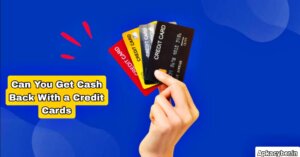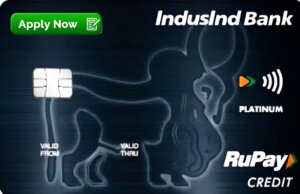
In today’s increasingly digital economy, credit cards have become more than just a means of borrowing—they’re now tools for earning rewards, managing budgets, and even accessing cash when needed. Among the various benefits credit cards offer, the term “cash back” often causes some confusion. Can you actually get cash from a credit card? If so, is it free money, or does it come with strings attached?
This article explores the concept of cash back as it relates to credit cards in two main contexts:
-
Cash back rewards – Earning money back on your purchases.
-
Cash advances – Withdrawing actual cash using your credit card.
Understanding the difference between these two—and knowing how to use them wisely—can help you make smarter financial decisions.
Cash Back Rewards: Earning Money from Purchases
What Are Cash Back Rewards?
Cash back rewards refer to a percentage of money that you get back when you use your credit card for eligible purchases. For example, a card might offer 1% cash back on all purchases or 5% back in select categories like groceries or gas.
Here’s how it works: if you spend $100 on groceries using a 5% cash back card, you’ll earn $5 back—either as a statement credit, a deposit to your bank account, or even as a check or gift card, depending on the card issuer.
Types of Cash Back Credit Cards
There are several types of cash back cards:
-
Flat-rate cards: Offer the same percentage (e.g., 1.5% or 2%) on all purchases.
-
Tiered cards: Offer higher rewards for specific categories (e.g., 3% on dining, 2% on groceries).
-
Rotating category cards: Change bonus categories every quarter (e.g., 5% on gas Q1, 5% on Amazon Q2).
Each card has different rules, and the best one for you depends on your spending habits.
How Do You Get the Cash?
Once you’ve earned rewards, most issuers let you redeem them in several ways:
-
Statement credit: Reduces your balance.
-
Bank deposit: Transfers cash to your checking account.
-
Check by mail: Some issuers offer a physical check.
-
Gift cards or merchandise: Available through the issuer’s rewards portal.
The cash back isn’t literal cash in your wallet, but it’s money you can use however you like—effectively reducing the cost of your purchases.
Is There a Catch?
Not really, but there are a few caveats:
-
Interest charges: If you carry a balance, interest will usually outweigh any rewards.
-
Fees: Some premium cash back cards come with annual fees.
-
Spending caps: Bonus categories might have limits (e.g., 5% on the first $1,500 spent per quarter).
Used wisely, cash back credit cards can be a way to earn while you spend—just be sure to pay your balance in full each month.

Cash Advances: Getting Physical Cash from a Credit Card
Now let’s talk about getting actual cash from a credit card—the kind you can withdraw from an ATM or use as emergency funds. This is called a cash advance, and while it is possible, it comes with significant costs and risks.
What Is a Cash Advance?
A cash advance lets you borrow cash against your credit card’s limit. You can typically do this in several ways:
-
ATM withdrawal: Using your credit card PIN at an ATM.
-
In-person at a bank: Present your card and ID at a bank branch.
-
Convenience checks: Issued by some card providers to be deposited or cashed.
Unlike a purchase, a cash advance does not come with a grace period—you start paying interest immediately.
How Much Can You Withdraw?
You usually can’t withdraw your full credit limit. Card issuers often impose a cash advance limit, which is typically 20% to 50% of your total credit limit. So, if you have a $10,000 credit limit, your cash advance limit might be only $2,000 to $5,000.
You can find your cash advance limit on your monthly statement or by contacting your issuer.
Costs and Fees
Cash advances are expensive. Here’s what to watch out for:
-
Cash advance fee: Usually 3% to 5% of the amount withdrawn (e.g., $10-$50 for a $1,000 advance).
-
High interest rate: Often higher than your standard purchase APR—sometimes 25% or more.
-
No grace period: Interest starts accruing immediately.
-
ATM fees: Additional charges from the ATM owner.
Let’s break it down with an example:
If you take a $500 cash advance with a 5% fee and a 25% APR:
-
Fee: $25 immediately.
-
Interest: Accrues daily at ~$0.34/day (based on 25% APR).
-
If you don’t pay it off for a month, you could owe $35–$40 extra on top of the $500.
That’s a high price for quick cash.
When Might a Cash Advance Make Sense?
In general, cash advances should be a last resort. But they might be justifiable in these situations:
-
Emergency situations where no other funds are available.
-
Short-term cash needs that you can pay off quickly.
-
No access to debit or checking account temporarily.
Even then, alternatives like personal loans, borrowing from friends or family, or using a credit card for purchases instead of cash are often better options.

The Difference Between Cash Back and Cash Advance
| Feature | Cash Back Rewards | Cash Advance |
|---|---|---|
| Purpose | Earn rewards for purchases | Withdraw physical cash |
| Cost | Free (when paying in full) | High fees and interest |
| Repayment | Pay by due date to avoid interest | Interest starts immediately |
| Benefit | Extra money or statement credit | Access to emergency funds |
| Recommended Use | Regular purchases | Emergencies only |
Pros and Cons of Cash Back Credit Cards
Pros
-
Free rewards: Earn money for everyday spending.
-
Flexibility: Use rewards how you like—cash, credit, or gifts.
-
Variety: Choose a card that suits your lifestyle.
-
No cost (if paid in full): No interest = free money.
Cons
-
Temptation to overspend: Chasing rewards can lead to debt.
-
Complex terms: Some cards have rotating categories or caps.
-
Annual fees: Might offset the rewards earned.
-
Rewards expire: On some cards, unused rewards can disappear.
Tips to Maximize Cash Back and Avoid Costly Cash Advances
-
Always pay your balance in full to avoid interest.
-
Use a card that aligns with your spending habits—e.g., high grocery spending? Get a grocery bonus card.
-
Track rotating categories or activate them each quarter if required.
-
Avoid using your credit card at ATMs unless it’s an emergency.
-
Know your cash advance limit and avoid using it casually.
-
Opt for a card with no annual fee unless the rewards significantly outweigh the cost.
-
Set alerts to remind yourself when statement credits or rewards are available to redeem.
-
Explore alternatives to cash advances, such as low-interest personal loans or payment plans.
Alternatives to Cash Advances
If you need cash and are considering a credit card cash advance, consider these alternatives:
-
Debit card or ATM from a bank account – No debt incurred.
-
Personal loan – Lower interest rate and structured repayment.
-
Buy now, pay later services (BNPL) – Interest-free installment plans.
-
Peer-to-peer lending – Online platforms like LendingClub or Prosper.
-
Paycheck advances – Some employers or apps (like Earnin) offer this service.
-
Balance transfer credit cards – Temporarily reduce or eliminate interest on existing balances.

Final Thoughts
So, can you get cash back with a credit card? Absolutely—but it depends on what you mean.
-
If you’re talking about cash back rewards, yes, they’re a great way to earn money for purchases you already make—just make sure you understand your card’s structure and pay off your balance in full.
-
If you mean getting physical cash, also yes—but that’s a cash advance, and it comes with significant fees and interest. Use it only when absolutely necessary and pay it off as soon as possible.
Understanding the distinction between earning money with your credit card and borrowing cash from it can make the difference between a smart financial move and an expensive mistake.